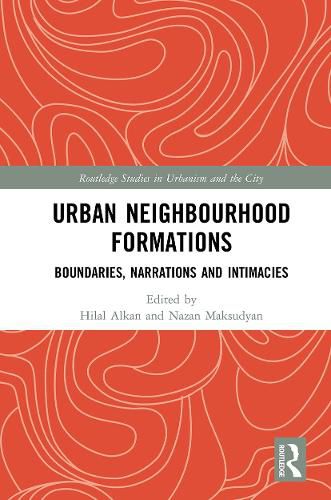Readings Newsletter
Become a Readings Member to make your shopping experience even easier.
Sign in or sign up for free!
You’re not far away from qualifying for FREE standard shipping within Australia
You’ve qualified for FREE standard shipping within Australia
The cart is loading…






This book examines the formation of urban neighbourhoods in the Middle East, Africa, and South Asia. It departs from ‘neighbourhoods’ to consider identity, coexistence, solidarity, and violence in relations to a place.
Urban Neighbourhood Formations revolves around three major aspects of making and unmaking of neighbourhoods: spatial and temporal boundaries of neighbourhoods, neighbourhoods as imagined and narrated entities, and neighbourhood as social relations. With extensive case studies from Johannesburg to Istanbul and from Jerusalem to Delhi, this volume shows how spatial amenities, immaterial processes of narrating and dreaming, and the lasting effect of intimacies and violence in a neighbourhood are intertwined and negotiated over time in the construction of moral orders, urban practices, and political identities at large.
This book offers insights into neighbourhood formations in an age of constant mobility and helps us understand the grassroots-level dynamics of xenophobia and hostility, as much as welcoming and openness. It would be of interest for both academics and more general audiences, as well as for students of undergraduate and postgraduate courses in Urban Studies and Anthropology.
$9.00 standard shipping within Australia
FREE standard shipping within Australia for orders over $100.00
Express & International shipping calculated at checkout
This book examines the formation of urban neighbourhoods in the Middle East, Africa, and South Asia. It departs from ‘neighbourhoods’ to consider identity, coexistence, solidarity, and violence in relations to a place.
Urban Neighbourhood Formations revolves around three major aspects of making and unmaking of neighbourhoods: spatial and temporal boundaries of neighbourhoods, neighbourhoods as imagined and narrated entities, and neighbourhood as social relations. With extensive case studies from Johannesburg to Istanbul and from Jerusalem to Delhi, this volume shows how spatial amenities, immaterial processes of narrating and dreaming, and the lasting effect of intimacies and violence in a neighbourhood are intertwined and negotiated over time in the construction of moral orders, urban practices, and political identities at large.
This book offers insights into neighbourhood formations in an age of constant mobility and helps us understand the grassroots-level dynamics of xenophobia and hostility, as much as welcoming and openness. It would be of interest for both academics and more general audiences, as well as for students of undergraduate and postgraduate courses in Urban Studies and Anthropology.